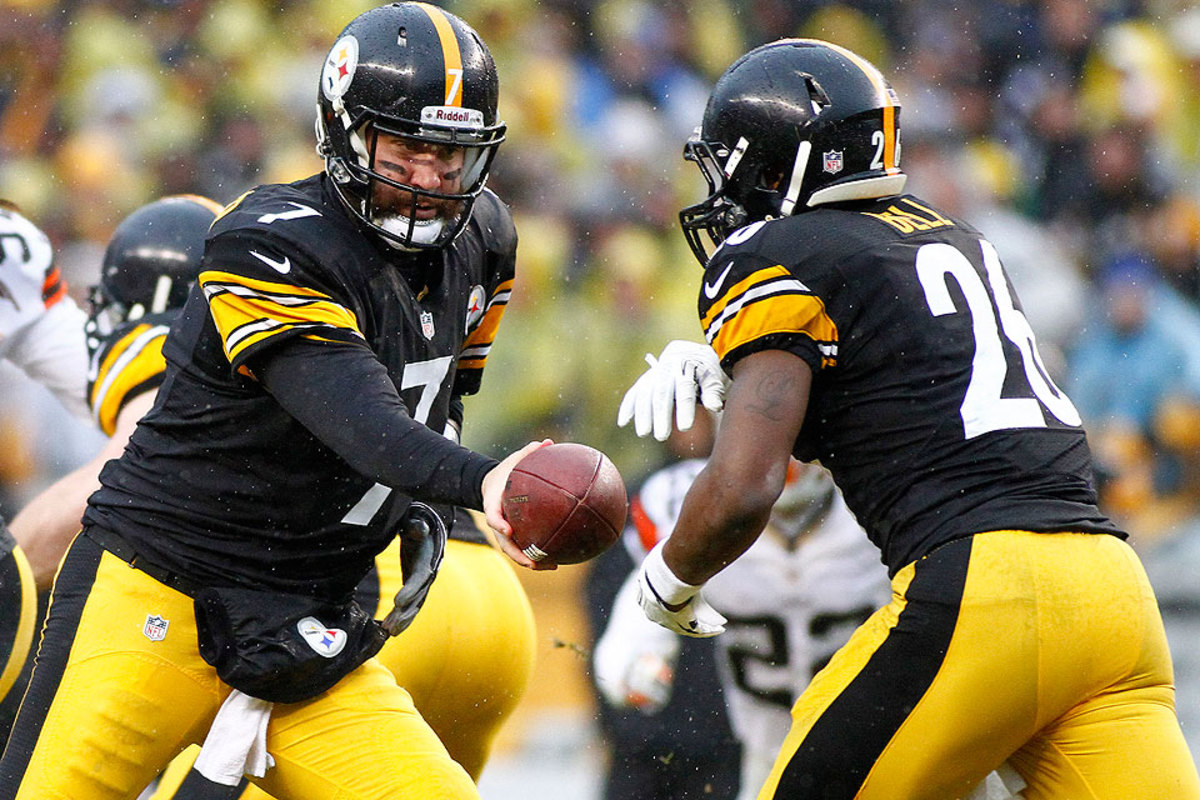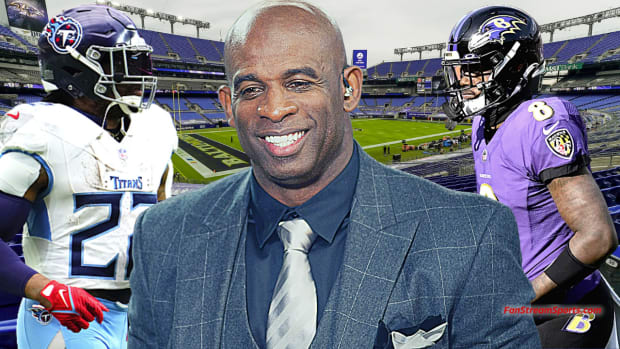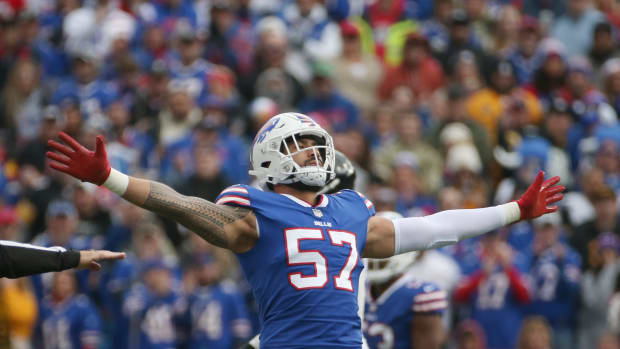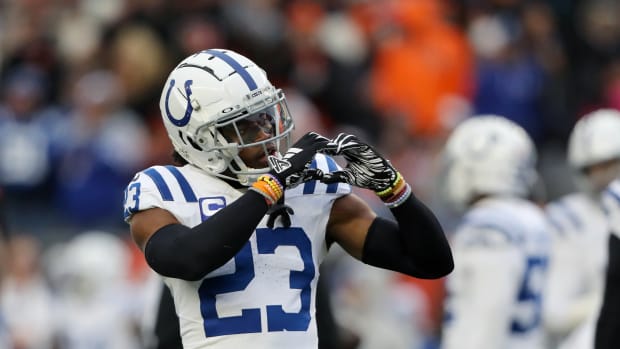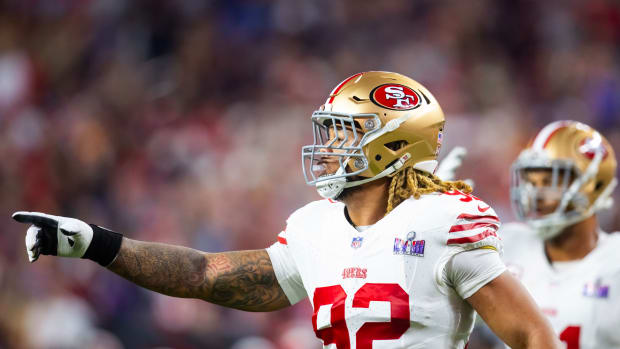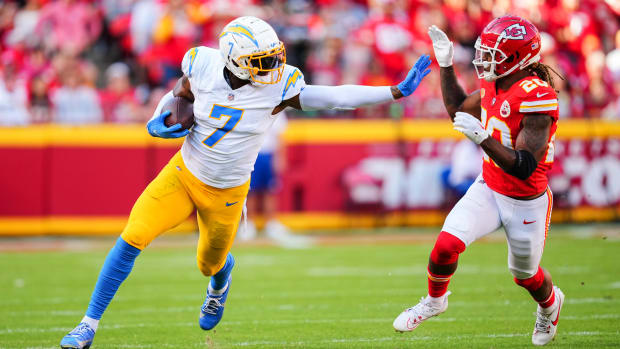Time for a New Approach in Pittsburgh?
The best part of the NFL draft is its brutal honesty. We’re always asking coaches and general managers to be transparent about their teams; we’d love for them to reveal which of their players they don’t actually like. Of course, they never do.
Except during the draft, that is.
You wouldn’t upgrade your TV if you love the one you already have. The same concept applies to how teams view players. A team doesn’t draft a player if it has someone the general manager already loves at the same position. And if a team gets a chance to draft a stud who somehow falls to them, well, the front office is suddenly taking a sharper look at the incumbent player’s limitations.
General managers and coaches often say they take the best player available on their board. In reality, they usually take the player who best fits their needs. Granted, there’s often overlap. It really boils down to common sense: a team that has Andrew Luck or Aaron Rodgers would never contemplate drafting a quarterback, even if that QB had a perfect grade and rated at the top of every board. This is an extreme example, but it paints a clear picture. Players aren’t drafted unless they’re expected to fill some need.
In this way, the most interesting team to watch in this year’s draft will be the Steelers. Come the second week of May, it will be fascinating to see what GM Kevin Colbert and coach Mike Tomlin tell us about their club, which missed the playoffs for back-to-back seasons for the first time since 1999-2000.
For the longest time, the Steelers have had the perfect draft model. They filled holes two or three years in advance, so rookies (even first-round picks) often learned the ropes from the second string. This works when you have good assistant coaches; young players are able to develop under teachers like linebackers coach Keith Butler and secondary coach Carnell Lake, who both work under legendary defensive coordinator Dick LeBeau.
Pittsburgh's Pecking Order
Rookie second-stringers:
WR A. Randle El, 2nd Rd., '02
S Chris Hope, 3rd, '02
S Troy Polamalu, 1st, '03
OT Max Starks, 3rd, '04
CB B. McFadden, 2nd, '05
OT Trai Essex, 3rd, '05
WR Santonio Holmes, 1st, '06
S Anthony Smith, 3rd, '06
LB Lawr. Timmons, 1st, '07
LB LaMarr Woodley, 2nd, '07
TE Matt Spaeth, 3rd, '07
RB Rash. Mendenhall, 1st, '08
DE Ziggy Hood, 1st, '09
WR Mike Wallace, 3rd, '09
CB Keenan Lewis, 3rd, '09
LB Jason Worilds, 2nd, '10
WR Emm. Sanders, 3rd, '10
DE Cameron Heyward, 1st, '11
OT Mike Adams, 2nd, '12
WR Markus Wheaton, 3rd, '13
Rookie starters:
WR Plaxico Burress, 1st, '00
OT Marvel Smith, 2nd, '00
NT Casey Hampton, 1st, '01
LB Kendrell Bell, 2nd, '01
G Kendall Simmons, 1st, '02
QB B. Roethlisberger, 1st, '04
TE Heath Miller, 1st, '05
C Maurkice Pouncey, 1st, '10
OT Marcus Gilbert, 2nd, '11
OLB Jarvis Jones, 1st, '13
RB Le’Veon Bell, 2nd, '13
Since taking over Pittsburgh’s football operations in 2000, Colbert has drafted 42 players in the first three rounds, with 32 eventually becoming starters. Of those 32, however, only 11 started at least half of the games as rookies (see sidebar).
Despite this shrewd model, the Steelers are coming off a second straight 8-8 disappointment. Only twice in the previous dozen years under Colbert had they failed to post a winning record. Will he and Tomlin be less patient and draft players to fill immediate needs?
They’ve actually done this a few times recently on offense. Running back Le’Veon Bell and guard David DeCastro were selected to answer immediate needs in the past two years, but they were also taken to help prop up the running game, where football is played in its simplest form. Rookies taken primarily for the passing game or defense still don’t crack the first unit in Pittsburgh.
Maybe that’s because Pittsburgh historically hasn’t had many holes to fill here. Or it might be that the staff isn’t under the immense pressure felt by other front offices around the league. Unlike most head coaches and GMs trying to avoid a three-year playoff drought, Tomlin and Colbert don’t have to worry about job security working for the Rooney family, which is as patient as it is wise. And if Colbert and Tomlin want to keep drafting and developing players who won’t have major roles until years two or three, well, two Super Bowl appearances in the past seven years has earned them that right.
But there are several holes on the 2014 roster to worry about.
Wide receiver is one. Last year’s third-round pick, Markus Wheaton, had finger injuries and rode the bench for most of 2013. He’s now being thrust into the No. 2 job. The signing of Lance Moore takes some of the pressure off, but in today’s NFL, if a guy can’t cut it as a No. 2, he probably can’t cut it as a No. 3 either. (Just ask Darrius Heyward-Bey, whom the Steelers recently signed to compete for a low-end roster spot.) At the owners meetings in Orlando this winter, Tomlin said he looked forward to Wheaton “taking a significant step.” We’ll see how true that is when the Steelers are on the clock and a handful of intriguing wideouts are on the board.
On defense, the end position is of serious concern. Fourth-year pro Cameron Heyward finally played up to his first-round potential last season, which is one reason Ziggy Hood was deemed replaceable. But veteran Brett Keisel still hasn’t been re-signed, nor has a replacement been found. Unless, of course, you consider 2013 seventh-round pick Nick Williams, who sat out last year with a kneecap injury. But if the Steelers felt Williams could be their guy, they wouldn’t have waited 222 picks to draft him.
At inside linebacker there are questions about 2013 sixth-rounder Vince Williams, who was forced into a starting role after Larry Foote’s season-ending injury last September. Williams improved against the run, but he remains wide-eyed against the pass. The plan was for 2012 third-round pick Sean Spence to one day replace Foote. Spence, unfortunately, suffered a catastrophic knee injury in his first training camp and has yet to play a game. He’s said to be progressing well this offseason, but he’s no sure thing.
Markus Wheaton disappointed the Steelers in his rookie season—one start, six receptions total—and will face certain competition at the wide receiver position in camp. (Jan Kruger/Getty Images)
And then there’s cornerback. Ike Taylor showed hints of decline last season. At 34 he remains a potent starter who can match up against No. 1 receivers in a modified scheme that no longer requires him to shadow those guys on an island. But Taylor is likely not in the long-term plans; he had to take a pay cut and has an expiring contract.
Opposite Taylor, William Gay gave his usual vacillating performance last year. Cortez Allen has been adequate in the slot and looked good when he was promoted back to starting left corner late in the season. But today’s NFL demands three quality corners, not just two. Colbert usually drafts a developmental cornerback between the third and fifth rounds. Whoever that corner is this year may get a crack at playing right away.
Whether Colbert fills holes immediate in this draft might be determined by which players are still on the board. (Including compensatory picks, the Steelers will draft at Nos. 15, 46, 97, 118, 157, 173, 192, 215 and 230). My guess is he’ll ignore immediate needs and stick to his model of drafting two years in advance. Reason being, Colbert was unusually active in free agency this year. Moore’s signing gave some cushion to the need at wide receiver. The signing of nosetackle Cam Thomas may temporarily take care of defensive end; it depends on whether incumbent nosetackle Steve McLendon and/or Thomas can slide outside and still be viable. And the need at linebacker might have been addressed by the signing of safety Mike Mitchell, whose presence will allow Troy Polamalu or Shamarko Thomas to replace Vince Williams as dime ’backers on passing downs.
The last two times the Steelers came off 8-8 seasons, Colbert stayed true to his “draft for the future” model. In 2007, he selected Lawrence Timmons and LaMarr Woodley. In 2013, he took Jarvis Jones, Wheaton and Shamarko Thomas. All of these guys, save for Jones, were backups as rookies. (And Jones ended up losing his starting spot for several weeks in the middle of the season.)
In ’07, however, the Steelers were just two years removed from a Super Bowl title. In ’13, they were two years removed from a 12-win season. We haven’t seen this franchise come off back-to-back lackluster campaigns since the late 1990s. If they were to consider a new approach, now would be the time.
































